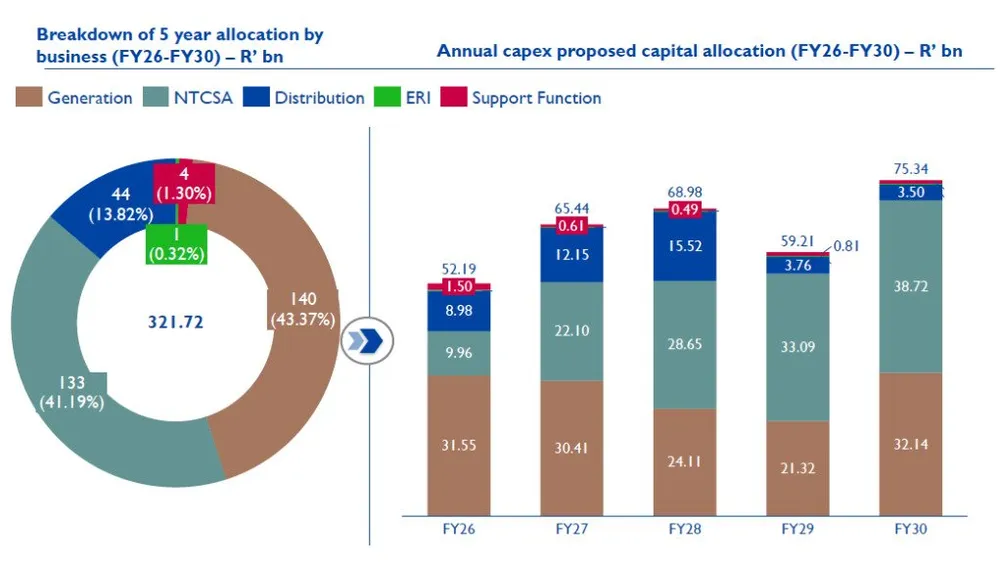South Africa’s New Electricity Department Charts Ambitious Course for Grid and Renewables
Ramakgopa plans a R400bn deal for 20 GW of renewables and 5,044 km of gridlines, promising zero loadshedding by 2030, and a wholesale electricity market.
On April 23, 2025, South Africa’s newly established Department of Electricity and Energy (DEE) presented its strategic priorities to the Portfolio Committee on Electricity and Energy, outlining a comprehensive plan to transform the nation’s energy landscape by 2030. Separated from the Department of Mineral and Petroleum Resources as of April 1, pursuant to President Cyril Ramaphosa’s 2024 proclamation, the DEE has taken up residence at Matimba House in Pretoria, with Subesh Pillay appointed as acting director-general. The department’s agenda, detailed in a submission to lawmakers, focuses on expanding renewable energy, upgrading transmission infrastructure, and fostering a competitive electricity market, all while aligning with South Africa’s just energy transition.

Central to the DEE’s five-year plan is the procurement of 20 gigawatts (GW) of new renewable energy capacity, increasing the installed base from 11 GW to 33 GW by 2030. This expansion aims to elevate the share of electricity generated by independent power producers from 14% to 40%, with local content in renewable projects targeted to reach 60%. Concurrently, the department plans to add 5,044 kilometers of new transmission lines, a figure that aligns with, but is slightly lower than, the 6,600 kilometers projected by Eskom’s National Transmission Company South Africa (NTCSA) due to differing planning horizons. This grid expansion is part of a broader Transmission Development Plan, which envisages 14,000 kilometers of new lines and 67,000 MVA of transformer capacity by 2035.
To finance these initiatives, the DEE seeks to boost private-sector investment in energy infrastructure from R80 billion to R400 billion by decade’s end. A key mechanism is the introduction of private Independent Transmission Projects, complementing NTCSA’s efforts. The government has initiated a pre-commercial process for a first phase of such projects, with a tender for 1,164 kilometers across seven corridors scheduled for November 2025. Eskom’s corporate plan, presented to the same committee, allocates R133 billion—41.2% of its R321.72 billion five-year capital expenditure budget—to NTCSA, with spending rising from R9.96 billion in the current financial year to R38.72 billion by 2030. This marks a fivefold increase over 2025 levels, though current construction rates, projected at 423 kilometers this year, suggest a significant acceleration is needed.
The DEE’s vision extends beyond infrastructure. It aims to eliminate loadshedding by 2030, establish a fully operational wholesale electricity market, and introduce a market code for trading. The department also targets a 15% share of electricity traded within the Southern African Power Pool, up from 5%, and seeks to rank among the top 10 globally for clean energy investment. Streamlining project approvals is another priority, with licensing and permitting times to be reduced from 24 to 6 months. Additionally, the DEE plans to facilitate 500,000 tonnes of green-hydrogen capacity and create 200,000 energy-sector jobs.
To guide these efforts, the DEE is finalizing the Integrated Resource Plan (IRP2025), which will replace the 2019 version and is under discussion at the National Economic Development and Labour Council. A Gas Masterplan, still in draft form, is also slated for full implementation by 2030. Internally, the department aims to digitize all core business functions, improve workforce diversity, and maintain clean audits for itself and its state-owned entities, including Eskom, the National Energy Regulator, and others. With an annual budget exceeding R6 billion, over R4 billion of which supports Eskom and municipal electrification, the DEE wields significant resources.
Eskom, meanwhile, is carving out a stand-alone renewables unit, allocating R18.5 billion of its R140 billion generation budget to renewables and gas-to-power projects, including a proposed gas facility in Richards Bay. Speaking from an international energy event in the UK, Eskom CEO Dan Marokane emphasized partnerships with private investors, leveraging Eskom’s land and workforce. The distribution unit, also being legally separated, receives R44 billion.
The DEE’s ambitious targets signal a robust commitment to South Africa’s energy transition, but their success hinges on overcoming entrenched challenges, including bureaucratic delays and financing constraints. As the department and Eskom align their efforts, the coming years will test their ability to deliver on this transformative vision.


